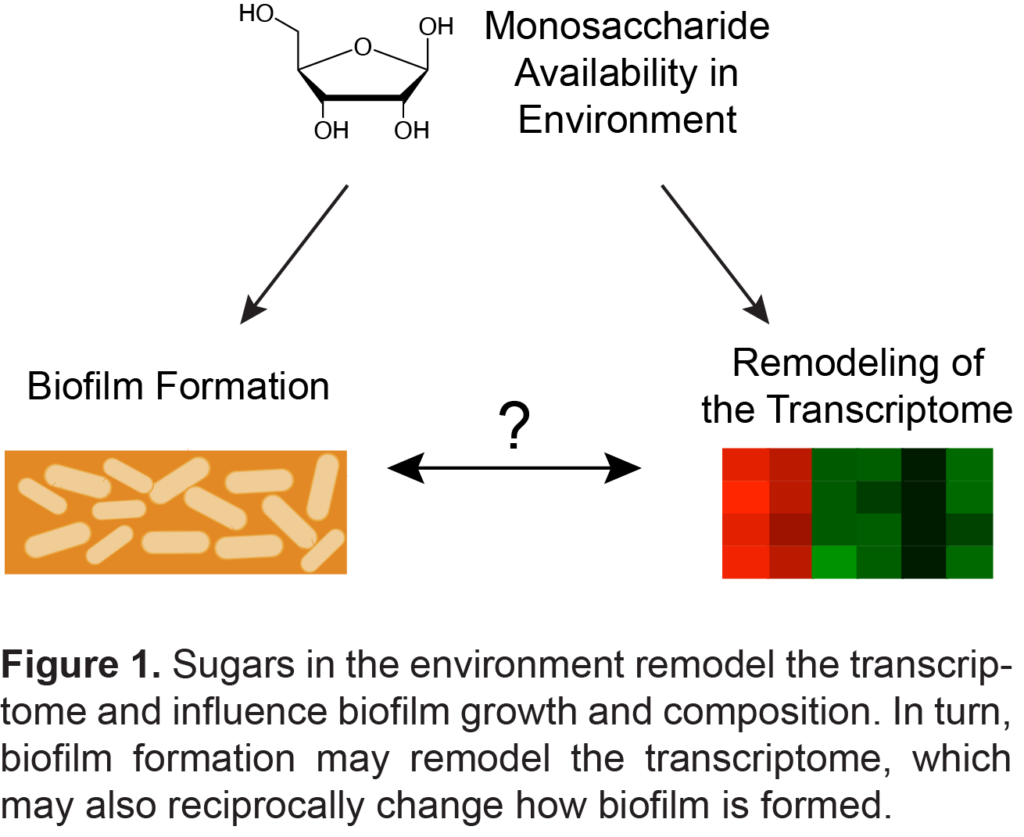
Antibiotic resistance has reduced the efficacy of many antibiotics and led to livestock culling, compromised crops, and increased human deaths. Resistance to antibiotics is heightened when bacterial cells are in the sedentary, biofilm state. The overall goal of this project is to identify environmental conditions that lead to defects in biofilm formation and/or an increase in the antibiotic sensitivity of biofilm-associated bacteria.
The central hypothesis of the project is that different sugars remodel the bacterial transcriptome to modulate biofilm growth and the composition of the extracellular substances surrounding cells in the biofilm. A comprehensive analysis of the influence of monosaccharides on E. coli biofilm formation and composition has not been conducted at either phenotypic or transcriptomic levels. To understand how sugars might be influencing biofilm growth and composition, two methods of inquiry will be pursued. First, the influence of environmental monosaccharides on biofilm growth and composition will be measured using well-established UV-visible growth and biochemical assays and confocal scanning laser microscopy. Second, the effect of these monosaccharides on the transcriptomes of planktonic and biofilm bacteria will be characterized using RNA-seq and putative targets will be confirmed with deletion studies.
The unique focus on examining both growth and composition will provide the field with additional information about how specific pathways interact to change the extracellular matrix, which relates to the heartiness of biofilm. Understanding the influence of various sugars on these processes will reveal how different carbon metabolic pathways are interlinked with biofilm formation and composition. Moreover, leverage points will be identified in these linked metabolic and signaling pathways that could work synergistically to eradicate or promote biofilm formation. This work will provide the greater scientific community with a list of pathways and individual proteins to target, which will augment the leads medicinal chemists can use to develop new antibiotics and provide materials chemists with a starting point for developing antibiofilm compounds for coatings.
This work is currently funded by the National Science Foundation (MCB-2226953, 08/01/2022 – 07/31/2025)